Technical Treatises of Antiquity (22 vols.)
Digital Logos Edition
This product has been transferred from Community Pricing to Pre-Pub. The actual funding level may be lower than it appears, which could delay production. The amount of funding still needed will be evaluated and updated soon.
Overview
In the first two centuries AD, the Romans brought together the sum of civilizing knowledge, and carried it to new heights. Their empire is remembered in the arches of the Coliseum, countless miles of road, and even in the shapes of the stars. The Technical Treatises of Antiquity collection includes some of the earliest records in the fields of horticulture, agriculture, astronomy, architecture, army tactics, and urban planning. Many of these treatises remained the standard by which work in these fields was judged for hundreds of years afterward. They serve us now as fascinating windows into how the Empire was built, sustained, and defended across hundreds of years and thousands of miles.
Ptolemy’s Tetrabiblos shows how, for a millennium, inhabitants of the pagan Western hemisphere drew significance from their place amongst the stars. Vitruvius’ treatise On Architecture—dedicated to Rome’s first emperor, Caesar Augustus—details how the famous columns and stadiums of Rome were built, covering architecture and engineering both large and small, from buildings and aqueducts to measurement tools. Theophrastus’ Enquiry into Plants served as a reference point in botany for 1,200 years. Columella, Cato, and Varro tell us how the Empire was fed in their works on agriculture. And of course Frontinus, Aeneas, Asclepiodotus, and Onasander provide details on the character and tactics of the Roman soldiers who left maps of Europe, Africa, and the Near East colored red.
This collection contains the complete texts in their Loeb Classical Library editions. Each text is included in its original Greek or Latin, with an English translation for side-by-side comparison. Use Logos’ language tools to go deeper into the original language text with linked translations, definitions, and pronunciation tools as you explore the scientific language of these Greek and Latin writers. There has never been a better way for students of history, Greek, or Latin to research ancient scholarship.
Key Features
- 22 volumes detailing how Rome was built, sustained, and defended
- Original technical illustrations and glossaries
- Window into Greek and Roman military, scientific, and technical culture
- Loeb Classical Library editions
Product Details
- Title: Technical Treatises of Antiquity
- Series: Loeb Classical Library
- Editors: E. Capps, T. E. Page, and W. H. D. Rouse
- Publisher: Harvard University Press
- Volumes: 22
- Pages: 5,538
Individual Titles
- Aeneas Tacticus, Asclepiodotus, Onasander
- Aeneas Tacticus, Asclepiodotus, Onasander: Greek Text
- Enquiry into Plants, vol. 1
- Enquiry into Plants, vol. 1: Greek Text
- Enquiry into Plants, vol. 2
- Enquiry into Plants, vol. 2: Greek Text
- Tetrabiblos
- Tetrabiblos: Greek Text
- Cato and Varro: On Agriculture
- Cato and Varro: On Agriculture: Latin Text
- On Architecture, vol. 1
- On Architecture, vol. 1: Latin Text
- On Architecture, vol. 2
- On Architecture, vol. 2: Latin Text
- Columella: On Agriculture, vol. 1
- Columella: On Agriculture, vol. 1: Latin Text
- Columella: On Agriculture, vol. 2
- Columella: On Agriculture, vol. 2: Latin Text
- Columella: On Agriculture, vol. 3
- Columella: On Agriculture, vol. 3: Latin Text
- The Strategems and Aqueducts of Rome
- The Strategems and Aqueducts of Rome: Latin Text
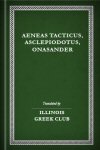
Aeneas Tacticus, Asclepiodotus, Onasander
- Authors: Aeneas Tacticus, Asclepiodotus, and Onasander
- Translator: Illinois Greek Club
- Series: Loeb Classical Library
- Publisher: Harvard University Press
- Publication Date: 1923
- Pages: 272
This volume contains:
- Aeneas Tacticus
- Preface
- Introduction
- The Illinois Greek Club’s translation of Aeneas Tacticus
- Asclepiodotus
- Preface
- Introduction
- The Illinois Greek Club’s translation of Asclepiodotus
- List of Technical Terms
- Onasander
- Preface
- Introduction
- The Illinois Greek Clun’s translation of Onasander
- Index
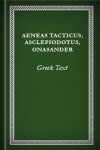
Aeneas Tacticus, Asclepiodotus, Onasander: Greek Text
- Authors: Aeneas Tacticus, Asclepiodotus, and Onasander
- Series: Loeb Classical Library
- Publisher: Harvard University Press
- Publication Date: 1923
- Pages: 272
This volume contains the Greek texts of Aeneas Tacticus, Asclepiodotus, and Onasander.
Aeneas Tacticus lived in the 4th century BC and was one of the earliest Greek writers on military tactics, in particular military communication.
Asclepiodotus lived in the 1st century BC and was a student of Posidonius.
Onasander lived in the 1st century BC. His surviving work deals with the comprehensive duties of a general.
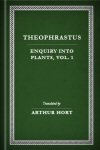
Enquiry into Plants, vol. 1
- Author: Theophrastus
- Translator: Arthur F. Hort
- Series: Loeb Classical Library
- Publisher: Harvard University Press
- Publication Date: 1916
- Pages: 256
This volume contains:
- Preface
- Introduction
- Arthur F. Hort’s translation of books 1–5 of Enquiry into Plants
Arthur F. Hort translated all of Theophrastus’ Enquiry into Plants for the Loeb Classical Library. He died in 1935.
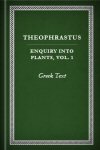
Enquiry into Plants, vol. 1: Greek Text
- Author: Theophrastus
- Series: Loeb Classical Library
- Publisher: Harvard University Press
- Publication Date: 1916
- Pages: 256
This volume contains the Greek texts of books 1–5 of Enquiry into Plants.
Theophrastus (371–287 BC) is considered the father of botany. Aristotle bequeathed his writings to Theophrastus and designated him as his successor at the Lyceum. The school flourished during the 36 years Theophrastus lead it.
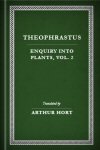
This volume contains Arthur F. Hort’s translation of books 6–9 of Enquiry into Plants.
Arthur F. Hort translated all of Theophrastus’ Enquiry into Plants for the Loeb Classical Library. He died in 1935.

This volume contains the Greek texts of books 6–9 of Enquiry into Plants.
Theophrastus (371–287 BC) is considered the father of botany. Aristotle bequeathed his writings to Theophrastus and designated him as his successor at the Lyceum. The school flourished the 36 years Theophrastus lead it.
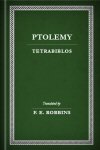
Tetrabiblos
- Author: Ptolemy
- Translator: F. E. Robbins
- Series: Loeb Classical Library
- Publisher: Harvard University Press
- Publication Date: 1940
- Pages: 248
This volume contains:
- Introduction
- The Luminaries and Planets
- The Signs of the Zodiac
- F. E. Robbins’ translation of Tetrabiblos
- Index
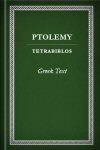
Tetrabiblos: Greek Text
- Author: Ptolemy
- Series: Loeb Classical Library
- Publisher: Harvard University Press
- Publication Date: 1940
- Pages: 248
This volume contains the Greek text of Tetrabiblos.
Ptolemy (AD 90–168) was a Greco-Roman mathematician, astronomer, geographer, and poet. His Almagest was the seminal text in astronomy until Copernicus 1,400 years later.
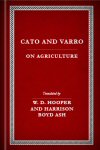
Cato and Varro: On Agriculture
- Authors: Cato and Varro
- Translators: W. D. Hooper and Harrison Boyd Ash
- Series: Loeb Classical Library
- Publisher: Harvard University Press
- Publication Date: 1934
- Pages: 288
This volume contains:
- Preface
- Introduction
- Bibliography
- W. D. Hooper and Harrison Boyd Ash’s translation of Cato’s De Agricultura
- W. D. Hooper and Harrison Boyd Ash’s translation of Varro’s Res Rustica
- Glossary
W. D. Hooper was a professor of Latin at the University of Georgia.
Harrison Boyd Ash was a professor of Latin at the University of Pennsylvania.
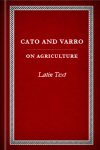
Cato and Varro: On Agriculture: Latin Text
- Author: Cato and Varro
- Series: Loeb Classical Library
- Publisher: Harvard University Press
- Publication Date: 1934
- Pages: 288
This volume contains the Latin texts of Cato’s De Agricultura and Varro’s Res Rustica.
Cato (234–149 BC) was a Roman statesman who was Consul of the Roman Republic from 195–194 BC. On Agriculture is the only text that survives from him.
Varro (116–27 BC) was a Roman politician, scholar, and writer. He oversaw Rome’s library under Julius Caesar. Though he was a prolific writer, his agricultural text is the only text that survives in its entirety.
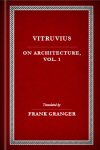
On Architecture, vol. 1
- Author: Vitruvius
- Translator: Frank Granger
- Series: Loeb Classical Library
- Publisher: Harvard University Press
- Publication Date: 1931
- Pages: 197
This volume contains:
- Preface
- Introduction
- Bibliography
- Frank Granger’s translation of books 1–5 of On Architecture
- Illustrations
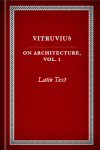
On Architecture, vol. 1: Latin Text
- Author: Vitruvius
- Series: Loeb Classical Library
- Publisher: Harvard University Press
- Publication Date: 1931
- Pages: 197
The volume contains the Latin text of books 1–5 of On Architecture.
Vitruvius (80–15 BC) was a Roman architect and engineer best known for his work On Architecture.
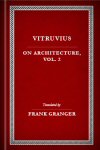
On Architecture, vol. 2
- Author: Vitruvius
- Translator: Frank Granger
- Series: Loeb Classical Library
- Publisher: Harvard University Press
- Publication Date: 1934
- Pages: 224
This volume contains:
- Preface
- Introduction
- Vitruvius and the Craftsmen of Rome
- Frank Granger’s translation of books 6–10 of On Architecture
- Note on Illustrations
- Illustrations
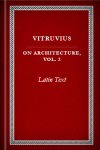
On Architecture, vol. 2: Latin Text
- Author: Vitruvius
- Series: Loeb Classical Library
- Publisher: Harvard University Press
- Publication Date: 1934
- Pages: 224
This volume contains the Latin texts of books 6–10 of On Architecture.
Vitruvius (80–15 BC) was a Roman architect and engineer best known for his work On Architecture.
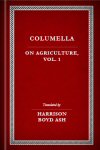
Columella: On Agriculture, vol. 1
- Author: Columella
- Translator: Harrison Boyd Ash
- Series: Loeb Classical Library
- Publisher: Harvard University Press
- Publication Date: 1941
- Pages: 256
This volume contains:
- Prefaces
- Introduction
- Life and Works of Columella
- Manuscripts and Editions
- Bibliography
- Sigla
- Harrison Boyd Ash’s translation of books 1–4 of On Agriculture
Harrison Boyd Ash was a professor of Latin at the University of Pennsylvania.
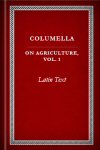
Columella: On Agriculture, vol. 1: Latin Text
- Author: Columella
- Series: Loeb Classical Library
- Publisher: Harvard University Press
- Publication Date: 1941
- Pages: 256
The volume contains the Latin texts of books 1–4 of On Agriculture.
Columella (AD 4–70)is the most important writer on agriculture of the Roman Empire.
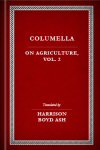
Columella: On Agriculture, vol. 2
- Author: Columella
- Translator: E. S. Forster and Edward H. Heffner
- Series: Loeb Classical Library
- Publisher: Harvard University Press
- Publication Date: 1954
- Pages: 268
This volume contains:
- Preface
- Sigla
- E. S. Forster and Edward H. Heffner’s translation of books 5–9 of On Agriculture
E. S. Forster was professor emeritus of Greek at Sheffield University.
Edward H. Heffner was professor of Latin at the University of Pennsylvania.
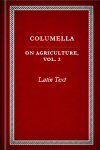
Columella: On Agriculture, vol. 2: Latin Text
- Author: Columella
- Series: Loeb Classical Library
- Publisher: Harvard University Press
- Publication Date: 1954
- Pages: 268
This volume contains the Latin text of books 5–9 of On Agriculture.
Columella (AD 4–70)is the most important writer on agriculture of the Roman Empire.
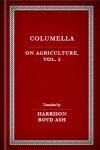
Columella: On Agriculture, vol. 3
- Author: Columella
- Translator: E. S. Forster and Edward H. Heffner
- Series: Loeb Classical Library
- Publisher: Harvard University Press
- Publication Date: 1955
- Pages: 224
This volume contains E. S. Forster and Edward H. Heffner’s translation of books 10–12 of On Agriculture and On Trees.
E. S. Forster was professor emeritus of Greek at Sheffield University.
Edward H. Heffner was professor of Latin at the University of Pennsylvania.
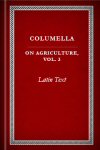
Columella: On Agriculture, vol. 3: Latin Text
- Author: Columella
- Series: Loeb Classical Library
- Publisher: Harvard University Press
- Publication Date: 1955
- Pages: 224
This volume contains the Latin texts of books 10–12 of On Agriculture and On Trees.
Columella (AD 4–70)is the most important writer on agriculture of the Roman Empire.
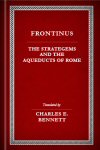
The Strategems and Aqueducts of Rome
- Author: Frontinus
- Translator: C. E. Bennett and Mary B. McElwin
- Series: Loeb Classical Library
- Publisher: Harvard University Press
- Publication Date: 1925
- Pages: 276
This volume contains:
- Preface
- Life and Works of Frontinus
- The Manuscripts
- Bibliography
- C. E. Bennett’s translation of The Strategems
- C. E. Bennett’s translation of The Aqueducts of Rome
- Illustrations
C. E. Bennett was the Goldwin Smith Professor of Latin at Cornell University.
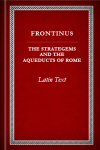
The Strategems and Aqueducts of Rome: Latin Text
- Author: Frontinus
- Series: Loeb Classical Library
- Publisher: Harvard University Press
- Publication Date: 1925
- Pages: 276
This volume contains the Latin texts of The Strategems and The Aqueducts of Rome.
Frontinus (AD 40–103) was a distinguished Roman aristocrat. He was appointed Water Commissioner of the aqueducts, and wrote the first published report of an investigation on engineering works.